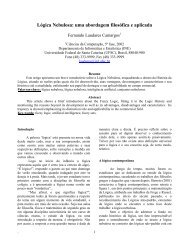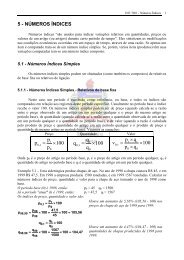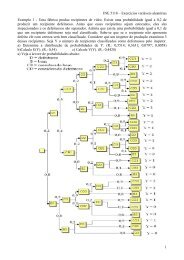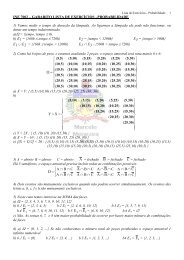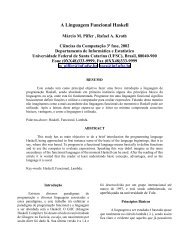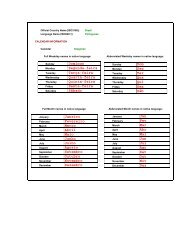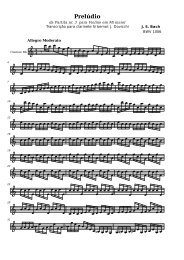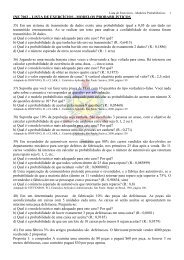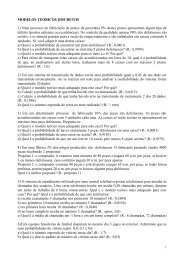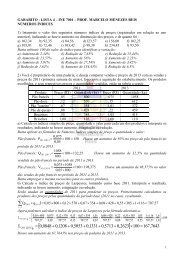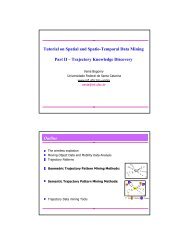Anais do IHC'2001 - Departamento de Informática e Estatística - UFSC
Anais do IHC'2001 - Departamento de Informática e Estatística - UFSC
Anais do IHC'2001 - Departamento de Informática e Estatística - UFSC
Create successful ePaper yourself
Turn your PDF publications into a flip-book with our unique Google optimized e-Paper software.
38<br />
<strong>Anais</strong> <strong>do</strong> IHC’2001 - IV Workshop sobre Fatores Humanos em Sistemas Computacionais<br />
Task CheckBalanceAccount (Domain Information)<br />
sequence<br />
{<br />
Dialog AccountNumberPassword (Information Request)<br />
Dialog ServicesSelection (Selection)<br />
Dialog AccountServices (Selection) <br />
Dialog AccountBalance (Domain Information) <br />
}<br />
where CheckBalanceAccount is the task name, Domain Information is the<br />
semantic type of the task. This task is composed of the dialogs<br />
AccountNumberPassword, ServicesSelection, AccountServices,<br />
and AccountBalance, each one with its corresponding semantic type. The<br />
clause indicates that dialog is ma<strong>de</strong> available simultaneously<br />
within the current dialog. The term sequence indicates that the dialogs between system<br />
and user will be exchanged in the specified or<strong>de</strong>r.<br />
Dahis’ language has a grammar in which <strong>de</strong>signers may specify the syntax and<br />
semantics of interaction conversations. However, until now it has not addressed in <strong>de</strong>pth<br />
some important pragmatic issues that may gui<strong>de</strong> <strong>de</strong>signers as to how to combine these<br />
components into a usable dialog structure. A comprehensive study of this matter was left<br />
for future work on her dissertation.<br />
In addition, although she claimed to be media- and environment-in<strong>de</strong>pen<strong>de</strong>nt, she<br />
provi<strong>de</strong>d little evi<strong>de</strong>nce to support this claim. In this paper, we will present a case study in<br />
which we analyze an application in three different environments, and raise a few questions<br />
about how her mo<strong>de</strong>l could be enriched by analyzing linguistic aspects, in particular<br />
through discourse analysis and pragmatics.<br />
3. Discourse Analysis & Pragmatics<br />
Discourse analysis can be said to study “how humans use language to communicate and, in<br />
particular, how addressers construct linguistic messages for addressees and how addressees<br />
work on linguistic messages in or<strong>de</strong>r to interpret them.” (Brown & Yule, 1983:ix). Several<br />
views can be consi<strong>de</strong>red, viewing sentence-as-object, text-as-product, and discourse-asprocess.<br />
As one may guess, the latter view is much in line with Semiotic Engineering. In it,<br />
sentences in a discourse are consi<strong>de</strong>red to be an evi<strong>de</strong>nce of an attempt by a speaker/writer<br />
(message producer) to communicate a message to a hearer/rea<strong>de</strong>r (message recipient). Both<br />
production and interpretation processes are studied as two ends of a larger communication<br />
process.<br />
Some of the issues we find interesting to investigate in HCI by making a parallel<br />
with studies in related communication fields are: topic of conversation, topic-shift, turn<br />
taking, references and anaphors, context, co-text, presuppositions, implicatures, and so on.<br />
We would like to refer the rea<strong>de</strong>r to Brown & Yule for an in-<strong>de</strong>pth discussion about these<br />
concepts. In this paper, we will approach some of these issues as they are brought up in our<br />
case study.<br />
In consi<strong>de</strong>ring interaction from a conversational perspective, we may also find it<br />
useful to try to apply studies from Pragmatics to HCI. In particular, Grice (1975) has



